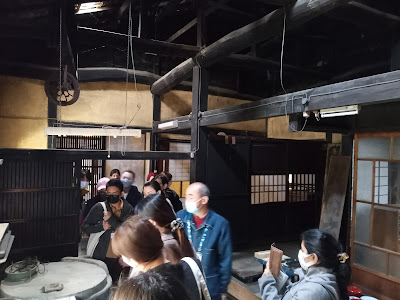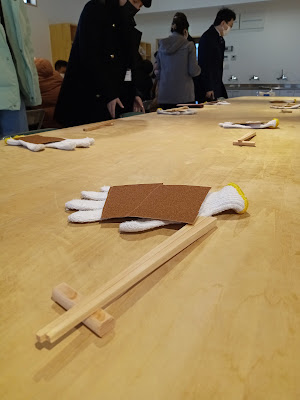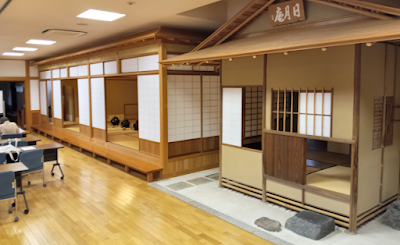Day 9, generations of Onshi to guide Ise Jingu pilgrims, traces of Edo-times in Kawasaki-2 chome
 |
| kitchen of the 1866 house is next to the main entrance |
Although the main theme for today was the local economy and the pilgrim experience away from the Jingu grounds, seeing so many daily life reminders of 100 or more years ago also presented something about the past-present relationship (historicity); how people both scholarly and ordinary citizens view the physical reminders from the past. Perhaps it is the Shinto idea of shape not substance, form and not physical fabric, that matters: when it comes to old streets and grids, artifacts and buildings, there is often little interest or motivation to conserve them. Thankfully, there are some NPO and groups of residents who feel attached to certain places or practices. They work to preserve and share them widely with others. Seeing interest, worth, and meaning in the old streetscape led to the creation of the Kawasaki neighborhood group that formalized into a registered NPO (non-profit organization). They were self-funded (private donors) until about 2018 when the city became partly involved in supported some of the costs to maintain the property and its programs.
People in Japan and elsewhere develop a taste for the past in many ways. Some see it in their grandparents who have knowledge, memories, interests different to one's own. Or it could be some outside event or presentation (book, movie, lecture, pop cultural references) that stirs one's interest and love of faraway lives and ways of being in the world. Still others have a visual experience of a place: looking closely at the things that stand out from new and modern elements. Those older features, details, events begin to shape the person's way of looking at the scenes of everyday places. Searching for voices of the past, some buildings or monuments are time-travelers that reach out to the person from across many years. Today's field trip was a chance to meet the past up close and personally.



Comments
Post a Comment